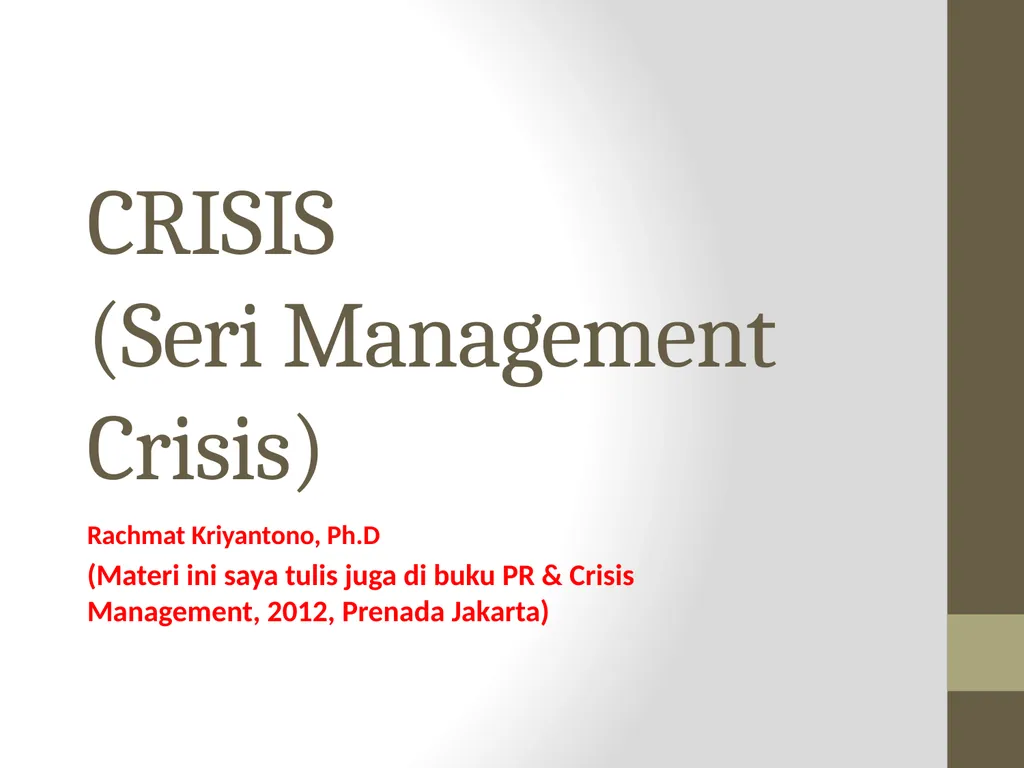
CRISIS (Seri Management Crisis) Rachmat
Author: trish-goza | Published: 2025-05-29
Description: CRISIS (Seri Management Crisis) Rachmat Kriyantono, Ph.D (Materi ini saya tulis juga di buku PR Crisis Management, 2012, Prenada Jakarta) WHY IMPORTANT TO STUDY CRISIS....??? Every organization is likely to experience crisis Crisis
Download Presentation
Download the PPT/PDF: Download
Transcript:
Loading transcript…